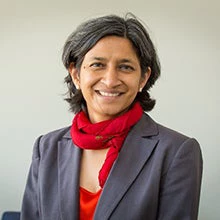 Delivering vaccine supplies in Kenya.
Delivering vaccine supplies in Kenya.
For a 2nd challenging year, the United Nations General Assembly is meeting in the shadow of a pandemic. Fully vaccinating every country against COVID-19 is the urgent issue on the agenda , and not just because of the lives and livelihoods immediately at stake. Access to vaccines would allow delegates from low- and middle-income economies to meet their counterparts in person safely, to work more effectively on long term issues like climate change, future pandemics, and poverty.
Though the world is now administering about 1 billion vaccine doses per month, access is still highly unequal. Multilateral initiatives including the African Vaccine Acquisition Trust and COVAX, established to procure vaccines for low- and middle-income countries, have contracted with a subset of developers that are facing production delays and export restrictions. Vaccine donations have not filled the gap, with less than one-quarter of pledges for 2021 delivered, and more donations delayed until 2022 as high-income economies prioritize their own populations.
In August, we quantified the impact of six policy and regulatory measures to increase vaccine supply, accounting for these constraints. While many forecasts suggest supply is ramping up, there have been setbacks. Continued lack of transparency in supply and delivery schedules means that it is hard to know for sure. Our measures will expand available supply by year-end.
Three measures to accelerate regulatory approvals, optimize production capacity across firms, and adjust generous dosage thresholds are not zero-sum , and do not require high-income countries to swap delivery dates with low- and middle-income countries. These are:
- Fast-tracking regulatory approval of effective vaccines. Vaccine importers rely on the WHO emergency use listing (EUL) to assure quality. Optimistic supply forecasts often include vaccine candidates that have not yet received WHO EUL, or production capacity for listed candidates that has not been inspected by international authorities. For instance, Brazil, China, Russia, and Thailand have licensed capacity to produce the AstraZeneca vaccine. However, if these facilities do not request WHO inspections, this cannot be exported easily. Only about 10 percent of the 4 billion dose annual production capacity of China’s Sinopharm and Sinovac has been authorized by the WHO. Inspecting these facilities requires expert inspectors to travel (at times with 14 day quarantines) and WHO has relied on consultants that are in short supply. Commitments of human resources from stringent regulatory authorities like the Australian Therapeutic Goods Administration (TGA), the European Medicines Agency (EMA), and the United States Food and Drug Administration (FDA) could help WHO fast-track inspections as emerging markets scale their production capacity.
- Repurposing production capacity to effective vaccines. Not all COVID-19 vaccine development efforts have resulted in highly effective vaccines, but vaccine development has resulted in capacity to produce vaccines. An example is CureVac, a developer that accepted funds from the Coalition for Epidemic Preparedness Innovations (CEPI), the European Investment Bank, and the German and United Kingdom governments to build a network capable of producing 300 million doses in 2021. Unfortunately, the CureVac vaccine is less effective than required for regulatory approval. While the firm plans to hold on to this capacity and develop another candidate, a greater return on public funds could be achieved by reallocating CureVac’s supplies to developers of effective mRNA vaccines through the COVAX marketplace.
- Authorizing half doses without compromising efficacy. The effectiveness of vaccines does not necessarily depend on the size of a dose in a linear fashion. While initial doses chosen in clinical trials can be large given a reasonable desire to demonstrate effectiveness, dosing can be adjusted downward. In the case of yellow fever, the WHO’s Strategic Advisory Group of Experts (SAGE) has recommended dose fractionation down to one-fifth of the standard dose to overcome scarcity in emergencies. Moderna scientists have shown that a 50µg rather than a 100µg dose provides the same immunity response. Regulators could authorize half doses of Moderna, doubling available supply, as well commission more research on the fractionation of this and other vaccines, as Brazil is doing with the Oxford/AstraZeneca vaccine.
Three other measures involve reconfiguring the prioritization of low-risk groups, to allow the vulnerable in every country to have their first dose. We’ve received feedback that these measures might be more politically challenging to undertake than the three above, however the science is clear that they would reduce global mortality. Further, some regulators are not convinced there is benefit from providing first doses or boosters to certain low-risk groups at all.
The measures are:
- Postponing boosters for adults with healthy immune systems. While vaccine manufacturers have a profit motive to market third doses to those willing to pay, an FDA expert advisory panel has said there is insufficient evidence that boosters would provide a health benefit to healthy adults. The health benefit of initial doses however is well known.
- Postponing doses for those with confirmed prior infection. Prior infection confers immunity through the same mechanism that vaccines do. Regulators could adopt the French approach and delay vaccinations for those with prior confirmed COVID-19 infection.
- Postponing doses for adolescents and children. This is perhaps the most politically challenging option, given parents’ strong desire to protect their kids. Nonetheless, the risk of mortality and severe illness for those under age 18 is extremely low compared to health care workers and the elderly in low- and middle-income countries. On this basis, a United Kingdom advisory panel does not recommend immunizing children ages 12-15, judging that the risk of side effects in this age group outweighs the health benefit.
Our analysis does not rule out other scenarios. Economies could reserve supplies to vaccinate only 80 percent rather than 100 percent of their eligible populations. India has announced plans to relax export restrictions constraining COVAX’s supply, though it is unclear by how much. Production could expand more rapidly than anticipated, despite current delays.
But we don’t need to wait and hope for these scenarios to play out. Six actions to expand supply could be implemented immediately and save lives.
We hope that delegates give them, and others, full consideration.




Join the Conversation